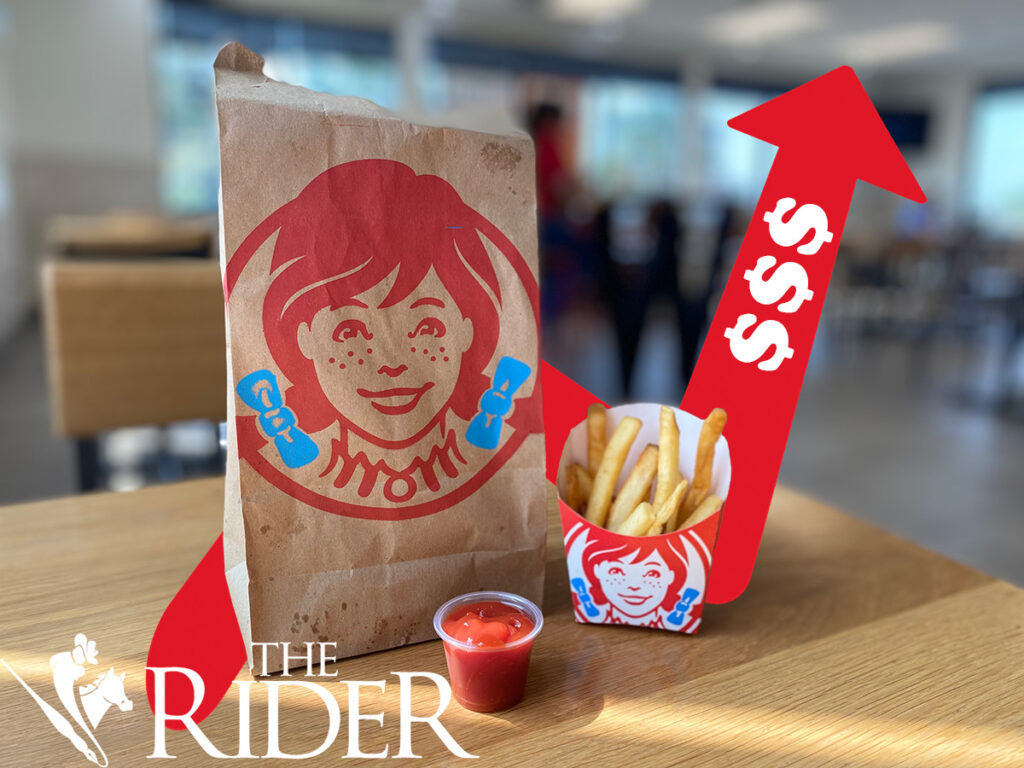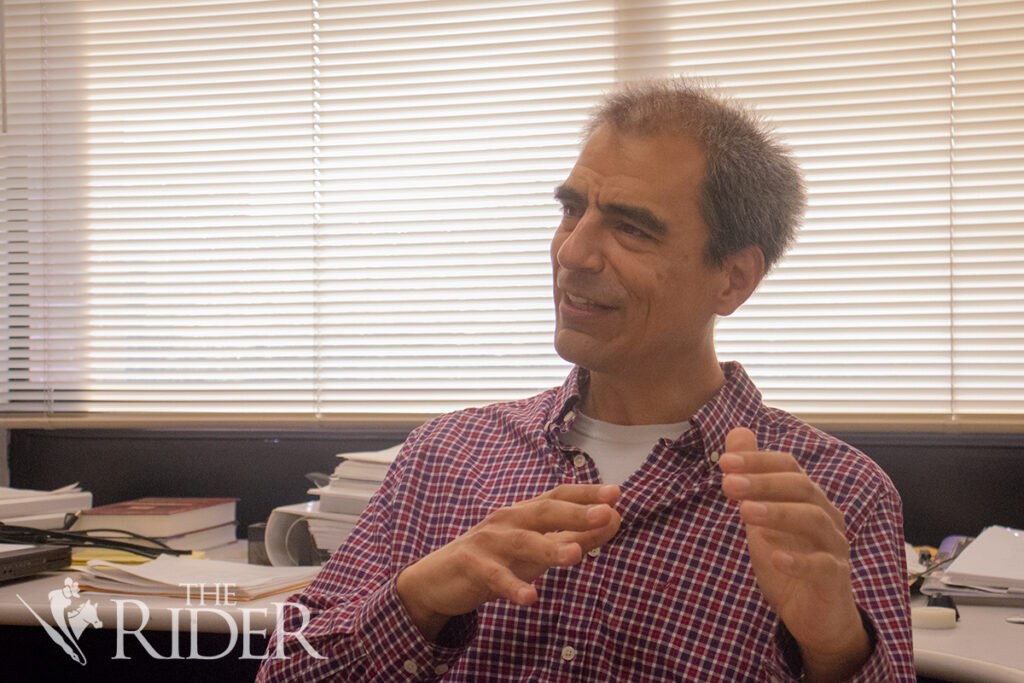Wendy’s ‘dynamic pricing’ strategy shakes up consumers

Shown is a Wendy’s bag and fries amid reports of potential price adjustments during peak business hours. Eduardo Cortez/THE RIDER PHOTO ILLUSTRATION
Todd A. Penegor, Wendy’s chief executive officer, announced the restaurant chain would implement dynamic pricing by 2025, inciting a social media outrage.
“Beginning as early as 2025, we will begin testing more enhanced features like dynamic pricing and day-part offering along with AI-enabled menu changes and suggestive selling,” Penegor said during a fourth quarter and full year 2023 earnings results call, according to a transcript published by The Motley Fool on Feb. 15.
The announcement was initially met with some confusion and negative reactions.
“I don’t really eat Wendy’s that much, but if I were to go and they would surge up the prices … it would affect me because you waste more than you did before,” said Kevin Galindo, an information systems freshman. “I don’t like wasting money!”
Media reports using terms like “surge pricing” sparked a social media storm, with many consumers expressing disapproval of the perceived plan to raise prices during peak hours.
The backlash prompted a media statement by the fast-food chain on Feb. 27 clarifying it had no plans to raise prices during peak hours.
The statement redirected the focus to its digital menu board that would utilize dynamic pricing to “change the menu offerings at different times of day and offer discounts and value offers to our customers more easily, particularly in the slower time of day.”
The Rider interviewed marketing professor Xiaojing Sheng who said that when AI and digital menu boards come into play, the situation becomes more complex.
AI-powered digital menu boards can personalize a customer’s experience at restaurants like Wendy’s, making recommendations based on past purchases making ordering faster and easier, she said.
“However, this also gives them the power to really control the price,” Sheng said, with the potential to charge different prices to different customers.
While this could include deals for loyal customers, it also raises concerns about price discrimination, where customers who are willing to pay more are charged higher prices, according to the professor.
Peter Magnusson, a professor and chair of the Marketing Department, said in an interview with The Rider dynamic and surge pricing are essentially “different labels for the same thing.”
“In my view, there’s no difference,” Magnusson said. “It’s the same idea of charging a higher price during peak demand and charging a lower price when demand is softer.”
The chair said many restaurants have used a similar practice that consumers may recognize as happy hour.
This practice is used in other industries like airlines or Uber where “consumers view it as part of daily life,” he said.
“In the … fast-food industry customers today are accustomed to thinking that the price of burgers and fries is relatively stable,” Magnusson said.
While the professor acknowledged potential resistance from consumers, he argued that dynamic pricing could be the “natural evolution” for many other industries.
“It will be interesting to see if the restaurant industry will move in the direction of the airline industry because 30, 4o years ago airlines did not use dynamic pricing,” Magnusson said.
In the pre-internet age, fares would be set at a rate without fluctuation.
Diego Escobari, an economics professor and Robert C. Vackar College of Business & Entrepreneurship Ph.D. program director, has dedicated 15 years of research into dynamic pricing within the airline industry and considers himself a “big enthusiast.”
“Wendy’s doesn’t really have a lot of market power” because consumers can drive to their competitors, Escobari said in an interview with The Rider.
While dynamic pricing may be initially confusing, consumers might eventually learn these patterns and adjust their purchasing times, visiting the chain during off-peak hours, potentially benefiting both Wendy’s and budget-conscious consumers, he said.
This strategy could actually benefit the consumers due to the competitive nature of the industry.
“In economics we say ‘welfare enhancing,’ so this is good for consumers because this is a very competitive industry,” he said. “If this was a monopoly … if it’s a very concentrated industry, you wouldn’t want this surge price.”
Deregulation allowed airlines to compete more freely, which led to lower prices and more choices for consumers. In theory, the same situation can happen in fast-food chains.
Escobari said consumers gain more control over their spending since they can choose when and where to buy based on factors such as price and quality.
“Economists are a big fan of letting the market decide,” he said.
Dynamic pricing can “enhance consumer well-being” or “alienate consumers” and create a negative impact on people’s perception if done incorrectly, according to Sheng.
Walmart is considering a strategy to match competitor prices in real-time using dynamic pricing.
“That would be definitely disrupting consumer demand, hopefully, you know, in a good way,” Sheng said.
Ultimately, while dynamic pricing holds promise for consumers in a competitive market, its success is contingent on both customer acceptance and Wendy’s implementation strategy.
“They’re hoping to quell some of the consumer anger reactions to some extent,” Sheng said in response to Wendy’s “March Madness” promotion for $1 burgers all month.
Magnusson said the restaurant chain was doing this to “make up for the CEO putting his foot in his mouth.”

Diego Escobari, an assistant professor of economics and Ph.D. program director at the Robert C. Vackar College of Business and Entrepreneurship, explains the effects of dynamic pricing. Aura Velasquez/THE RIDER





